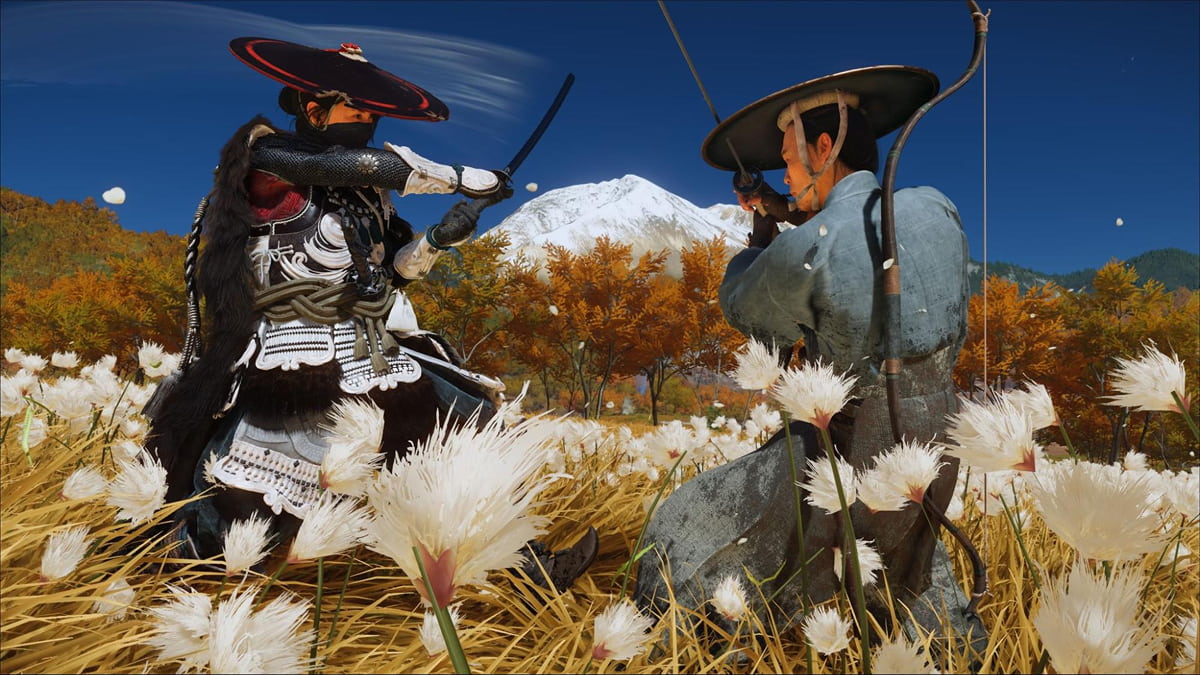You can trust VideoGamer. Our team of gaming experts spend hours testing and reviewing the latest games, to ensure you're reading the most comprehensive guide possible. Rest assured, all imagery and advice is unique and original. Check out how we test and review games here
- Block and parry timing are crucial in Ghost of Yotei’s combat system.
- Enemies use four different attack types: Standard Attacks, Parriable Attacks, Unblockable Attacks, and Disarm Attacks.
- Enemies are vulnerable to specific weapon types.
- Spirit is used to replenish health, as well as to unleash powerful Spirit Attacks.
Those familiar with Ghost of Tsushima will quickly find their footing in Ghost of Yotei combat. It differs from the standard action-adventure fare where you’re rewarded for being aggressive. Instead, patience, timing, and a keen understanding of the threat you’re facing are crucial to emerging victorious.
At the heart of Ghost of Yotei combat are the weapons our protagonist, Atsu, will pick up as she hunts down the Yotei Six. Much like stances in the original, enemies are vulnerable to a specific weapon depending on what they themselves are wielding. We’ll walk you through all the details, including parrying and blocking timing, weapon vulnerabilities, and Atsu’s moveset, as well as a quick primer on Spirit.
Block and parry timing explained
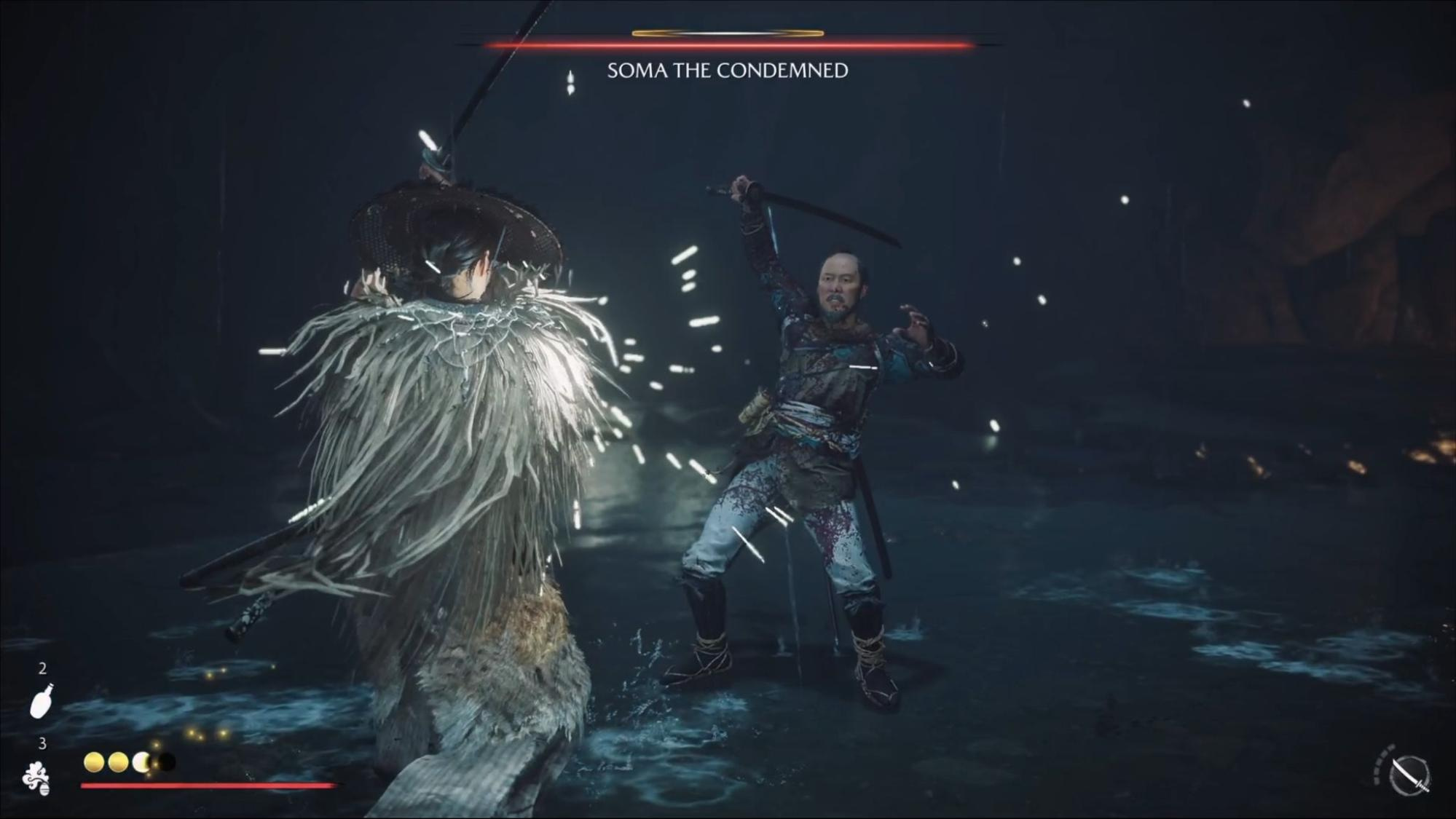
Block and parry timing is a core pillar of Ghost of Yotei combat, but first, let’s look at some definitions. By holding R1 before an enemy attack hits, Atsu will block the attack, avoiding damage. By tapping R1 just as an enemy attack lands, Atsu will parry, deflecting the attack, avoiding damage, and potentially opening up the enemy for a counterattack.
Now for timing. Blocking is straightforward: as long as you have R1 pressed before an attack connects, you’re safe. As for parrying, the timing is a tad trickier and the window tighter, but with practice, you’ll get a solid feel for it. You’ll want to hold off right until the enemy’s weapon is about to hit Atsu, then tap R1.
When done correctly, you’ll inflict Stagger damage as denoted by the meter above the enemy’s head. When it fills up, you’ll break their guard and interrupt them, leaving the door open for significant damage from any subsequent attacks. If your Ghost of Yotei parry timing is just right, you’ll trigger Perfect Parry, slowing time and allowing you to counterattack by pressing Square or Triangle.
A parry also triggers what’s called a Parry Interrupt. It works differently depending on the enemy. Parrying an attack from a standard enemy triggers a Parry Interrupt, exposing them to counterattacks. For larger, more powerful enemies, parrying multiple attacks in quick succession triggers Parry Interrupt.
It’s worth picking up the Charm of Futsunushi, which makes it easier to pull off parries, Perfect Parries, and Perfect Dodges. You can acquire it by completing the Faithful Leap Shrine parkour course in the northwest of the Tokachi Range region. The charm makes Ghost of Yotei combat noticeably easier.
Atsu’s attacks explained
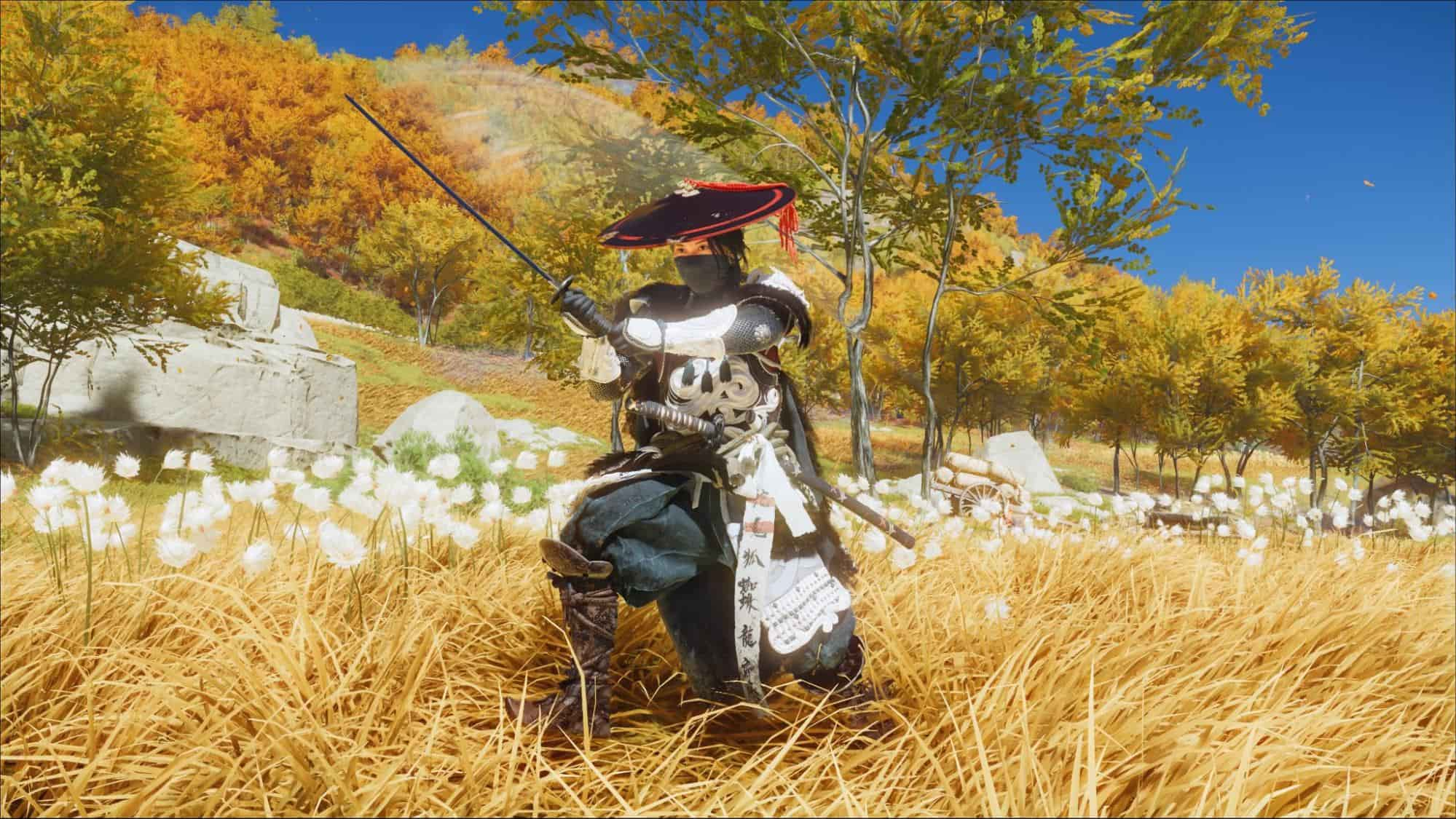
Atsu has three basic attack types and two supplementary ones that make up her Ghost of Yotei combat toolkit, some of which you’ll need to unlock using Altar of Reflection skill points, as follows:
- Light Attack: a standard attack performed by pressing Square.
- Heavy Attack: a slower, but more powerful attack that inflicts Stagger damage, performed by pressing Triangle.
- Focus Attack: a damaging strike performed by holding and releasing Triangle that inflicts Stagger damage. It also counters yellow Disarm enemy attacks.
- Jump Attack: press X and then Square to jump and attack an enemy, interrupting them and inflicting Stagger damage. It’s available once you unlock the skill in the Onryo skill tree.
- Shifting Strike: a quick Heavy Attack performed by pressing Triangle right after switching weapons. It’s unlocked by getting the skill of the same name in the Onryo tree.
Ghost of Yotei enemy attack types
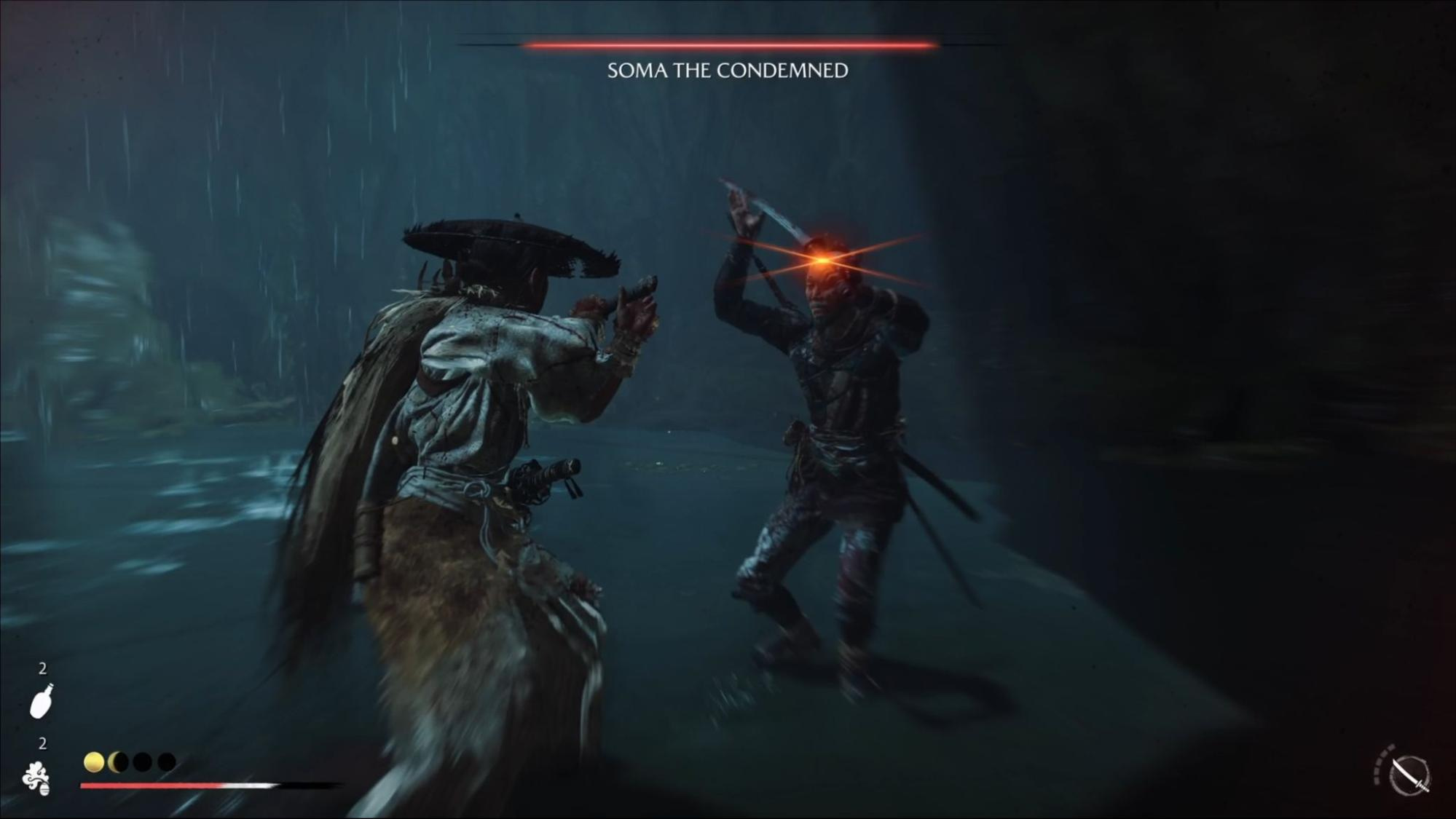
There are four different Ghost of Yotei combat attack types that enemies will use against Atsu. Once you have a firm understanding of them and know how to recognize them, combat becomes significantly easier. Here they are:
- Standard Attacks: These are your basic attacks that you can avoid by blocking, parrying, dashing, or rolling.
- Parriable Attacks: They are represented by a horizontal blue glint on the enemy’s weapon; you can’t block them, but you can parry them. You can also dash or roll to avoid damage.
- Unblockable Attacks: They are identified by a cross-shaped red glint; you can’t block or parry these attacks. Instead, you’ll need to dash or roll to avoid them.
- Disarm Attacks: Signalled by a yellow vertical glint, these attacks will disarm you, knocking your weapon out of your hand. If it connects, you’ll need to find and pick up the weapon. You can’t parry or block Disarm Attacks, and you’ll have to rely on dashing and rolling to avoid them.
Enemy weapon vulnerabilities and weapon counters
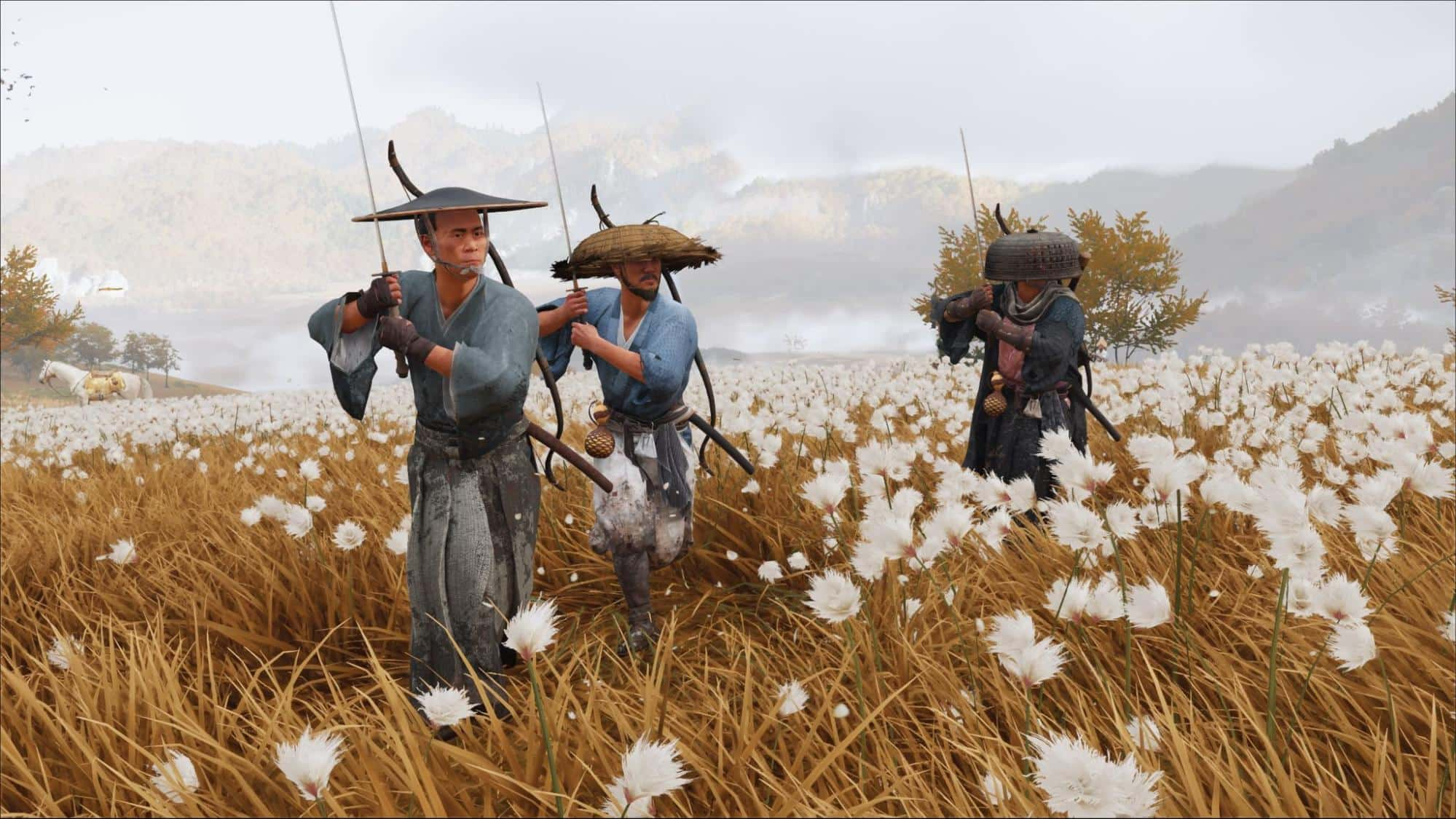
The efficacy of your weapons in Ghost of Yotei combat depends on what the enemy is using. Ghost of Yotei has what’s called Weapon Alignment, which means the enemy is vulnerable to the weapon you’re currently wielding. Using the right weapon increases Stagger damage, allowing you to break through blocks much quicker. It also lets you interrupt enemy attack chains with heavy attacks. Here’s a breakdown:
- Katana: Strong against enemies with katanas and swords.
- Dual Katanas: Strong against enemies with a yari, naginata, and polearms.
- Yari: Strong against enemies with a sickles, kusarigama, and dual kama.
- Odachi: Strong against large enemies and brutes.
- Kusarigama: Strong against shields and shielded enemies.
To swap weapons, hold down R2 then select your desired killing implement using X, Triangle, Square, and Triangle.
Spirit explained
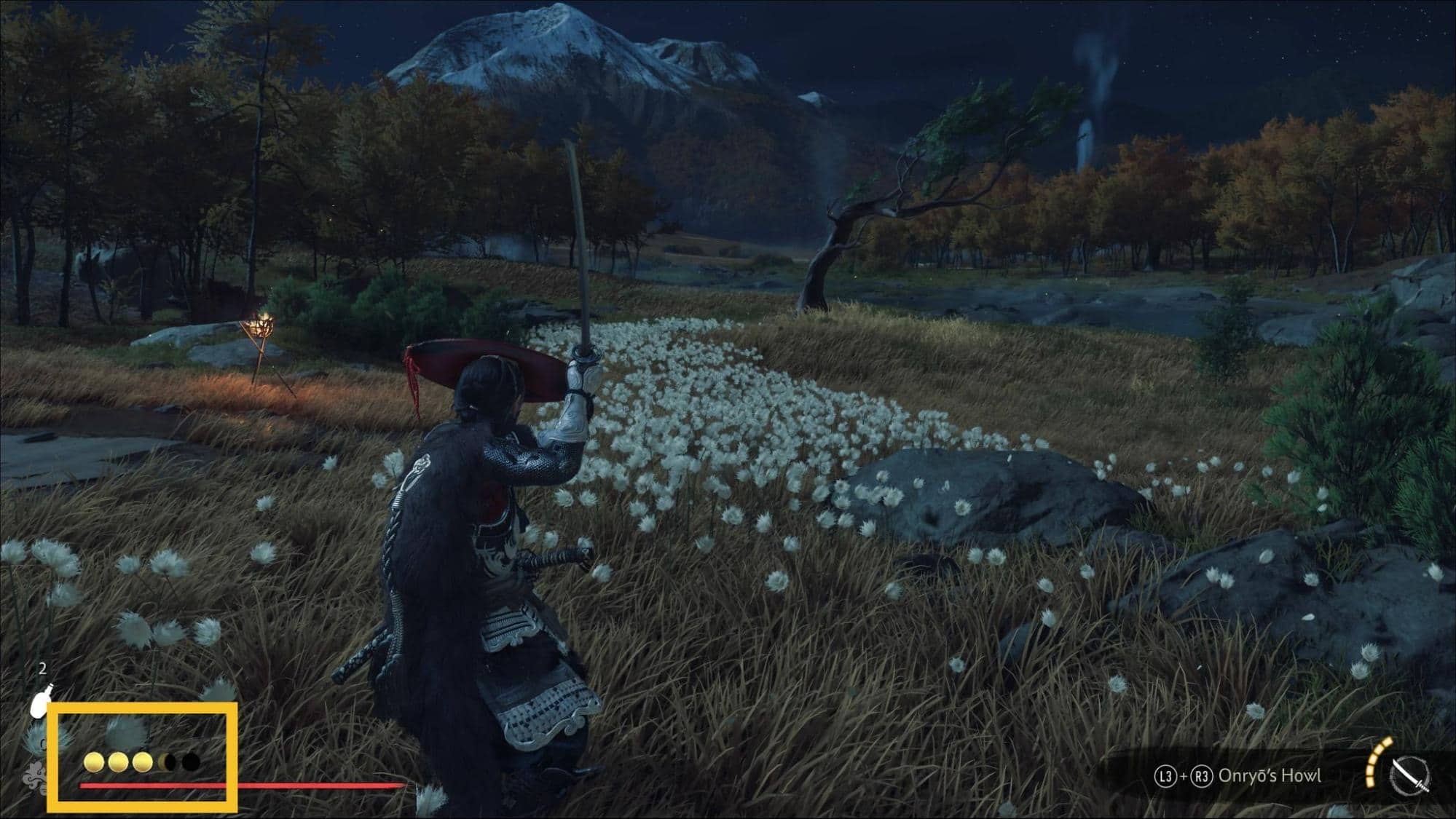
Spirit is similar to Resolve in Ghost of Tsushima. The circles in the bottom-left of the HUD represent your Ghost of Yotei Spirit meter. They fill up yellow as you gain Spirit, which you can use to heal or to unleash Spirit Attacks, powerful and unblockable special attacks. Visit Altars of Reflection to earn skill points that you can invest in Spirit Attacks, such as the Onryo’s Strike (costing three Spirit), Heavenly Slash (costing one Spirit) for the Katana, or Thundering Wave (costing one Spirit) for the Yari.
You’ll generate Spirit by pulling off successful parries and Perfect Parries, triggering Parry Interrupts, killing enemies, assassinating enemies, winning standoffs, using Onryo’s Howl, and resting at a camp. Cooking food at a camp and using specific Ghost of Yotei Charms (such as Toku’s Charm of Blessings and the Charm of Confident Strikes) grants bonus Spirit or improved Spirit regeneration. You can increase your maximum Spirit by completing Bamboo Strikes at mini-game spots across Ezo.
FAQs
To parry an enemy attack, tap the R1 button just as an attack is about to hit Atsu.
To avoid a yellow glint Disarm Attack, dash or roll out of the way by tapping the Square button.
To unlock new weapons, you must complete Sensei quests. There is one in each of the major regions in Ezo.
